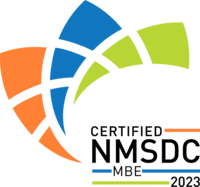Reframe Level of Cultural Maturity Phase III: The Practicing Stage
By the time a company has reached Phase III of its enterprise cultural maturation, it has a clear mission and buy in from many stakeholders.
The Practicing Stage
By the time a company has reached Phase III of its enterprise cultural maturation, it has a clear mission and buy in from many stakeholders. It’s moved beyond investigating different approaches and is beginning to try some on for size.
Because companies in Phase III are taking action, but still in the early stages of understanding what’s effective, they’re often a far cry from best practices being adopted across the organization. That’s why Phase III Cultural Maturation is known as “The Practicing Phase.” A company has an understanding of what to do but lacks confidence and consistency.
If this sounds something like your organization, you’re slightly more advanced than the majority of companies we sampled (averaging 2.8 on the 5 phase scale).
Symptoms – The organization has begun putting plans into action but…
Segments are often still measured without attention to more specific audience segments, minority groups are often undersampled.
Processes are being implemented, but not in a consistent manner.
Multiple departments are working toward a singular goal in a similar fashion, but they are still held back by legacy practices.
Technologies used (across the organization) lack the depth of insights needed to capture a full and realistic portrait of the total addressable audience. \
Objectives and thinking have matured but reality limits delivery.
Example –
Many enterprises have the roadmap on what to do but lack the experience to navigate it effectively.
For example, recently one large telco company spent a great deal of time on the Systems and Strategies necessary to begin to understand its total addressable marketplace. Unfortunately their segmenting undersampled the relevant minority segments.
The Hispanic population had proven to be an ideal customer segment. The company sought to appeal to a more youthful population within that segment. They examined Millennials and crossed that with that they knew about their existing Hispanic customer base.
They produced a brilliant campaign that spoke to many of the needs of their group, with one misstep. The campaign was primarily produced in Spanish. The problem? Hispanic Millennials in the US prefer to be messaged to in English.
The company had the right objective and the right idea but lacked the depth of insights on the Hispanic Millennial audience to really achieve their goals. They only learned this insight once the campaign was in market. They were able to remedy the situation, but had they invested in the right Segmentation and Systems they may have avoided learning in hindsight and saved a good deal of their budget.
Valuation of Segments.
When a brand is in the practicing stage, there is recognition of hyper growth segments. But attempts to capture these segments are often compromised by a lack of appreciation about how to drill down to richer insights and thus attention to measurement strategies. There is an appreciation of segmentation but minority groups are often undersampled.
This is often because while the organization is aligned on the need to #closethegap, they’re tied to legacy systems and practices. This leads to shallow insight development and a disconnect with the total addressable market.
Structure.
There is full buy in on the value of pursuing the new marketplace opportunity. However, in a phase III organization, a lack of experience limits cultural maturity. The end result is often a universally agreed upon strategy without the know how or tools to see it to fruition in a consistent manner. This results in well intended, well-planned, but poorly executed messaging.
Strategy.
Without the tools and tactics available to the organization, even the best plans become limited when put into action. Investing in new resources is often seen as a “nice to have.” Too often everyone operates in a false state of certainty that they are capable of doing what’s best.
Systems.
Most often these organizations lack the combined vision and/or experience necessary to realize that an investment in sophisticated technologies is a sound one. Or, the adoption of these practices and systems is inconsistent across the organization. Legacy investments limit cross enterprise collaboration and thus cross enterprise learning.
Solutions.
Organizations may still rely on vendors and partners to strategically pursue higher growth segments (e.g. localized events by target audience). The partners they choose are usually asked to play to a specific target (e.g. Millennials, US Hispanic, African American, Asian). In the case of cultural maturity, there are few if any strategic relationships with minority owned suppliers being asked to solve a scalable business problem.
Organizations looking to ensure their workplace becomes new marketplace ready should ask themselves the following questions:
– Is my organization limited by legacy systems that compromise our ability to understand and connect with various customer segments?
– Does my organization suffer from a lack of depth when it comes to total addressable marketplace insights?
– Would my organization benefit from enterprise level tools that afford the ability for enterprise collaboration and accelerated, shared learning?
– Is it our universal ambition to make adopting these practices and systems everyone’s responsibility?
– Could our ambition to do everything ourselves be costing us time, money, or engagement in the long term?
This is not an exhaustive list of questions, but the more no’s your organization truly arrives at, the more self-aware you are and thus you may find your workplace is better equipped for the new marketplace.
This article is the third in a series of five posts outlining the cultural maturation many companies experience. If you’d like help in accelerating the cultural maturity at your organization please reach out to us at contact@getreframe.com and/or download the full industry report.
Liked this read? You may also want to consider reading the following posts:
How to Assess Your Organizations Level of Cultural Maturity
Cultural Maturation Phase II: The Growing Stage
